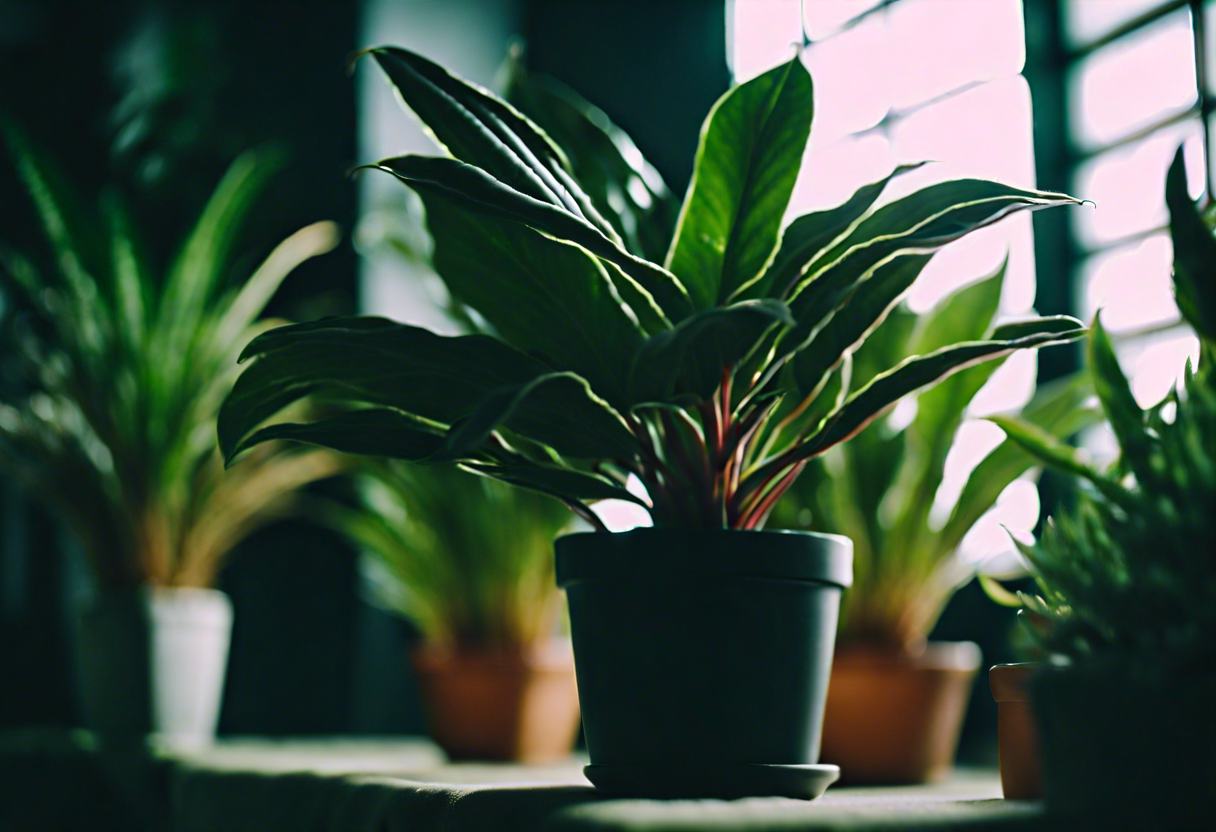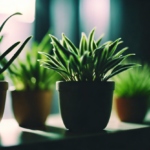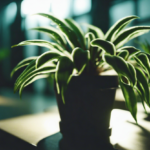Benefits of Large Low Light Indoor Plants
The Benefits of Large Low Light Indoor Plants
When it comes to indoor plants, large low light varieties offer numerous benefits that make them a popular choice for many homeowners. These plants not only bring a touch of nature into your living space but also improve air quality and create a peaceful and relaxing environment. Whether you have a spacious living room or a compact apartment, incorporating large low light indoor plants into your interior decor can have a significant impact on both your physical and mental well-being.
One of the primary benefits of large low light indoor plants is their ability to thrive in areas with minimal natural light. While most plants require direct sunlight to grow, low light plants have adapted to survive in environments with inadequate sunlight. This makes them perfect for areas of your home that do not receive a lot of natural light, such as bathrooms, bedrooms, or offices with limited windows.
In addition to their adaptability to low light conditions, large indoor plants bring a sense of tranquility and aesthetics to any space. Their lush foliage and vibrant green colors create a visually appealing focal point that can instantly enhance the overall atmosphere of a room. Whether you prefer tall, tree-like plants or bushy varieties, there are numerous options to choose from that will suit your personal style and the size of your space.
Furthermore, large low light indoor plants provide several health benefits. Plants naturally release oxygen and absorb carbon dioxide, helping to purify the air and improve overall air quality. This can be especially beneficial in indoor spaces where air circulation may be limited. By filtering out toxins and pollutants, these plants contribute to a healthier living environment and can alleviate symptoms of allergies and respiratory issues.
Another advantage of incorporating large low light indoor plants into your home is their ability to reduce stress and promote relaxation. Being surrounded by nature has been shown to have a positive impact on mental health, helping to reduce anxiety and improve overall well-being. By introducing these plants into your living spaces, you create a calm and serene atmosphere that can help to create a sense of tranquility after a long day.
Large low light indoor plants offer a multitude of benefits. They can thrive in areas with minimal natural light, improve air quality, enhance the visual appeal of your space, and promote mental well-being. With their adaptability and aesthetic advantages, these plants are an excellent option for homeowners looking to bring the beauty of nature indoors. Consider incorporating large low light indoor plants into your interior decor and experience the numerous benefits they bring to your home and overall well-being.
Types of Large Low Light Indoor Plants to Consider
When it comes to filling your indoor space with lush greenery, large low light indoor plants are a fantastic choice. Not only do they add a touch of natural beauty to any room, but they also offer numerous benefits for your overall well-being. These plants thrive in low light conditions, making them ideal for areas of your home that lack direct sunlight. If you’re looking to incorporate these plants into your indoor space, here are a few types to consider.
One popular choice is the Snake Plant (Sansevieria trifasciata). This plant is known for its long, sword-shaped leaves that have a striking variegated pattern. The Snake Plant is a great option for beginners as it requires minimal care and can tolerate low-light conditions. It also has air-purifying properties, making it an excellent choice for improving indoor air quality.
Another stunning large low light indoor plant is the ZZ Plant (Zamioculcas zamiifolia). This plant features glossy, dark green leaves that add a touch of elegance to any space. The ZZ Plant is incredibly versatile and can thrive in low-light areas, making it suitable for offices or rooms with limited natural light. It is also a resilient plant that can withstand periods of neglect, making it a low-maintenance choice for busy individuals.
If you’re looking for a plant with a tropical vibe, the Peace Lily (Spathiphyllum) is a fantastic option. This plant produces beautiful white flowers and has glossy, dark green leaves. The Peace Lily can tolerate low light conditions but thrives in medium to bright indirect light. It is also known for its air-purifying abilities, helping to improve the overall air quality in your home.
For a touch of drama, the Bird’s Nest Fern (Asplenium nidus) is an excellent choice. This plant has large, wavy leaves that resemble a bird’s nest, hence its name. The Bird’s Nest Fern can tolerate low light conditions but prefers medium to bright indirect light. It requires consistently moist soil and high humidity, making it a perfect choice for bathrooms or kitchens.
The Chinese Evergreen (Aglaonema) is a popular large low light indoor plant that comes in a variety of striking colors and patterns. It can thrive in low to medium light conditions, making it suitable for dimly lit rooms. The Chinese Evergreen is also known for its air-purifying abilities, helping to remove toxins from the air.
Large low light indoor plants into your home not only adds beauty but also provides numerous benefits for your well-being. Whether you choose a Snake Plant, ZZ Plant, Peace Lily, Bird’s Nest Fern, or Chinese Evergreen, these plants will thrive in low light conditions and enhance the ambiance of your indoor space. Remember to consider each plant’s specific care requirements to ensure they thrive and grow beautifully in your home.
Tips for Caring for Large Low Light Indoor Plants
When it comes to indoor plants, finding the right balance of light can be challenging. Many homes and offices lack the bright, direct sunlight that most plants thrive on. However, there is good news for those who still want to enjoy the beauty and benefits of indoor plants. There are several large low light indoor plants that are well-suited for spaces with limited natural light. To ensure the health and longevity of these plants, here are some essential tips for caring for them.
First and foremost, it is crucial to choose the right plants for your low light environment. Some popular options include the ZZ plant (Zamioculcas zamiifolia), snake plant (Sansevieria), pothos (Epipremnum aureum), and peace lily (Spathiphyllum). These plants are known for their ability to thrive in less than ideal lighting conditions. Additionally, they are relatively low maintenance, making them perfect for beginner plant enthusiasts.
When positioning your large low light indoor plants, it is essential to understand their light requirements. While these plants can tolerate low light, they still need some degree of indirect or filtered light to thrive. Avoid placing them in completely dark corners or areas with no light at all. Instead, look for spots near windows with sheer curtains or further away from windows with bright, direct sunlight.
Watering is another crucial aspect of caring for large low light indoor plants. In general, it is best to err on the side of underwatering rather than overwatering. These plants typically have lower water requirements compared to their sun-loving counterparts. Before watering, always check the moisture level of the soil first. Stick your finger about one inch deep into the soil and if it feels dry, it is time to water. Be sure to allow the water to drain out completely and remove any excess water from the saucer to prevent root rot.
Another tip for caring for these plants is to provide them with proper humidity. Most large low light indoor plants originate from tropical regions where humidity levels are higher. To mimic their natural habitat, you can increase humidity by placing a tray filled with water near the plants or by using a humidifier. Misting the leaves occasionally can also help provide moisture and create a more favorable environment for them to thrive.
It is essential to periodically dust and clean the leaves of your large low light indoor plants. Dust can accumulate on the surface of the leaves, which hinders their ability to photosynthesize effectively. Using a soft cloth or sponge, gently wipe down the leaves to remove any dust or debris. This practice not only improves their appearance but also ensures that they can absorb as much light as possible.
Caring for large low light indoor plants requires specific considerations. By choosing the appropriate plants, providing adequate light exposure, watering properly, maintaining proper humidity, and cleaning the leaves, you can ensure that these plants thrive in your indoor space. With a little care and attention, you can enjoy the beauty and benefits that large low light indoor plants bring to your home or office.
Decorating with Large Low Light Indoor Plants
When it comes to interior design, incorporating plants can bring life and vitality to any space. Large low light indoor plants are particularly desirable as they can thrive in areas with limited natural light. Not only do these plants enhance the aesthetic appeal of the room, but they also provide numerous health benefits. Here are some creative ways to decorate with large low light indoor plants.
1. Bold Statement Piece
Selecting a large low light plant as a focal point in a room can create a dramatic and eye-catching display. Consider species such as the Fiddle Leaf Fig or the Dracaena Massangeana, with their tall and striking shapes. These plants can add a touch of elegance and grandeur to any space, instantly transforming it into a lush oasis.
2. Hanging Beauties
Utilize hanging planters and macrame holders to showcase your large low light indoor plants. This not only saves valuable floor space but also allows the plants to cascade down, adding a unique visual element to the room. Spider plants and pothos are excellent options for hanging planters, as they have trailing vines that create a beautiful, cascading effect.
3. Green Screens
If you’re looking to divide a room or create some privacy, large low light indoor plants can serve as natural green screens. Choose plants with dense foliage, such as the Peace Lily or the Bamboo Palm, and arrange them strategically to form a living partition. These plants not only provide privacy but also purify the air, resulting in a healthier environment.
4. Corner Fillers
Large indoor plants are perfect for filling empty corners and transforming them into cozy nooks. The Snake Plant or the Areca Palm can add a touch of tropical elegance to any corner of your home. By incorporating plants into these neglected areas, you can breathe life into them and create a more inviting atmosphere in your space.
5. Natural Room Dividers
In open-concept spaces or larger rooms, large low light indoor plants can be used to create visual boundaries between different areas. Tall plants like the Rubber Tree or the Swiss Cheese Plant can be strategically placed to demarcate separate zones while adding a touch of natural beauty and freshness to the room.
Remember to consider the specific care requirements of each plant you choose. While large low light indoor plants are generally low maintenance, they still require regular watering, occasional fertilization, and proper lighting conditions. By following these creative ideas for decorating with large low light indoor plants, you can transform any space into a green sanctuary that promotes relaxation, productivity, and overall well-being.
Popular Large Low Light Indoor Plants for Beginners
When it comes to indoor plants, many beginners struggle to find the perfect plants that can thrive in low light conditions. Fortunately, there is a wide variety of large low light indoor plants that are not only suitable for beginners but also add a touch of green and freshness to any space. Whether you have limited natural light or just prefer a plant that requires less maintenance, here are some popular options to consider:
1. Snake Plant (Sansevieria Trifasciata)
The snake plant, also known as Mother-in-Law’s Tongue, is an excellent choice for those new to indoor gardening. It is a hardy, low-maintenance plant that can survive in almost any lighting condition, including low light. Snake plants have long, thick leaves with patterns that add visual interest to any room.
2. ZZ Plant (Zamioculcas Zamiifolia)
The ZZ plant is another beginner-friendly choice that thrives in low light environments. It has glossy, dark green leaves that add a touch of elegance to any space. ZZ plants are known for their ability to tolerate neglect and can go without water for extended periods.
3. Pothos (Epipremnum Aureum)
Pothos is a popular trailing plant with heart-shaped leaves that are variegated in shades of green, yellow, or white. It is an excellent option for beginners as it can tolerate a wide range of lighting conditions, including low light. Pothos plants can be grown in hanging baskets or placed on shelves, allowing their cascading vines to create a stunning visual effect.
4. Dracaena (Dracaena Spp.)
Dracaena plants come in various species and boast striking foliage that adds a tropical touch to any room. They are known for their air-purifying properties and ability to survive in low light conditions. The leaves of the dracaena plant can be green, striped, or even have vibrant red edges, providing a beautiful contrast against neutral backgrounds.
5. Chinese Evergreen (Aglaonema Spp.)
The Chinese Evergreen is a popular choice among indoor plant enthusiasts, thanks to its beautiful foliage patterns and low light tolerance. It is a slow-growing plant that requires minimal care and can thrive in dimly lit corners. Chinese Evergreens come in different varieties, with leaves ranging from deep green to silver or red.
Remember, although these plants can tolerate low light conditions, it is still important to provide them with some indirect light to ensure their proper growth. Additionally, be mindful of watering requirements, as overwatering can be detrimental to the health of these plants. By choosing one or more of these popular large low light indoor plants, you can enjoy the benefits of lush greenery even in the darkest corners of your home or office.
Conclusion
Incorporating large low light indoor plants into your home or office space can bring a myriad of benefits. These plants not only add a touch of greenery and beauty but also improve air quality, reduce stress, and enhance productivity. With the variety of options available, including the snake plant, pothos, and ZZ plant, you can easily find the perfect low light-tolerant plant to suit your aesthetic preferences.
Caring for large low light indoor plants requires a few essential considerations. Firstly, it is crucial to choose the right location that provides adequate indirect light. Be mindful of overwatering, as most of these plants prefer drier conditions and can thrive with less frequent watering. It is also important to dust the leaves regularly to ensure they can efficiently photosynthesize. Additionally, fertilizing and repotting when necessary will help promote healthy growth.
Aside from their health benefits, large low light indoor plants offer an opportunity to express creativity in decorating your living or working space. Consider placing them in tall pots or hanging baskets to add height and visual interest to a room. Mix and match different plant varieties to create eye-catching displays of contrasting colors, textures, and shapes. Furthermore, incorporating plant stands or utilizing vertical wall space can maximize the impact of these plants in small or limited areas.
For those new to indoor gardening, it is advisable to start with beginner-friendly large low light plants. The peace lily is an exceptional choice as it not only thrives in low light but also produces beautiful white flowers. The Chinese evergreen is another resilient plant that can tolerate low light conditions while adding a touch of elegance with its variegated leaves. The dracaena is also a popular option for beginners, known for its stunning foliage and adaptability to various light levels.
The allure of large low light indoor plants lies in their ability to thrive in less-than-ideal lighting conditions while providing numerous benefits. From enhancing indoor air quality to adding a touch of nature to your surroundings, these plants serve as natural stress relievers and productivity boosters. Remember to choose the appropriate plant for your space, provide proper care and maintenance, and unleash your creativity in the way you display them. With the wide array of options available, including beginner-friendly varieties, everyone can enjoy the beauty and benefits of large low light indoor plants in their own homes or workplaces.


